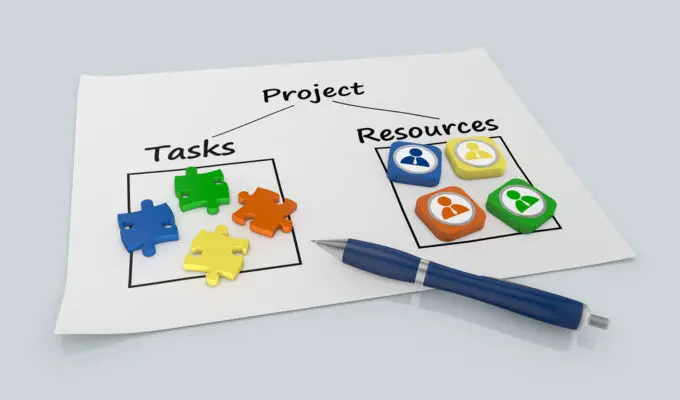This article provides a comprehensive guide on utilizing SharePoint for project management.
This piece presents a structured and informative approach to effectively using SharePoint as a project management tool.
The article will cover the basic understanding of SharePoint, setting up a project site, and managing tasks and communication within SharePoint.
This article provides guidelines for individuals to acquire the knowledge and skills required to use SharePoint for project management effectively.
What is SharePoint?
SharePoint offers several benefits for project management.
Firstly, it provides a centralized platform for collaboration, enabling teams to easily share and access project-related documents, tasks, and information.
Secondly, SharePoint’s customizable workflows and task management features help streamline project processes and improve efficiency.
Lastly, its integration with other Microsoft tools, such as Outlook and Teams, enhances communication and coordination among team members.
SharePoint is a valuable tool for project managers to manage and track project progress effectively.

Benefits of Using SharePoint for Project Management
One of the advantages of utilizing a collaborative platform like SharePoint for project management is the ability to streamline communication and foster effective collaboration among team members.
SharePoint offers several benefits that enhance project management processes:
Centralized Access and Permissions: SharePoint allows project managers to assign users specific permissions and access levels to project-related documents and content.
Only authorized individuals can view or edit project information, enhancing security and control.
Collaboration Features: SharePoint provides various tools, such as task lists and document libraries, that enable team members to work together seamlessly.
This promotes efficient collaboration, facilitates the sharing of project-related documents, and enables real-time updates and feedback.
Improved Communication: SharePoint offers communication features like discussion boards and team sites, which allow project teams to communicate effectively and share important information.
This fosters better communication within the project team, improving coordination and project outcomes.
SharePoint’s features and functionalities greatly support the project management process, enabling effective communication, collaboration, and organization of project-related information and resources.
Setting Up Your Project Site
This focuses on the key points in setting up a project site in SharePoint.
It covers creating a project site and customizing the home page to suit the project’s requirements.
Additionally, it explores how to add content and documents to the project site, enabling version control on documents and establishing a document library for efficient storage and organization of different document types.
Creating a Project Site
When creating a project site, it is essential to consider the specific requirements and objectives of the project to design a comprehensive and functional framework.
SharePoint is a powerful tool that can be used for project management, providing a platform for teams to collaborate, track project tasks, and share project documents.
Here are three key features of SharePoint that can enhance project management:
- Team Collaboration: SharePoint allows team members to collaborate in real time, providing a centralized location for discussions, file sharing, and document co-authoring.
- Access Controls: With SharePoint, project managers can control access to project sites and documents, ensuring only authorized individuals can view and edit sensitive information.
- Task Management: SharePoint provides built-in task management capabilities, allowing project managers to assign tasks, track progress, and monitor deadlines.
Customizing the Home Page of Your Project Site
Customizing the home page of a project site involves tailoring the layout and design elements to meet the specific needs and preferences of the project team, enhancing the overall user experience and facilitating efficient access to key project information.
Customizing the home page, project managers can create a centralized hub that provides a clear overview of project progress, upcoming tasks, and important announcements. SharePoint project management offers a variety of features and tools that enable users to customize their project site home page.
These include project site templates that provide a starting point for customization, project management dashboards that display real-time project performance metrics, and project reporting capabilities that generate detailed reports on project phases and progress.
Customizing the home page of a project site is an essential step towards project management success, as it helps improve project performance and ensures effective communication and collaboration among team members.
| Feature | Description | Benefits |
|---|---|---|
| Project site templates | Pre-designed templates that provide a starting point for customization | Saves time in creating a project site |
| Project management dashboards | Dashboards that display real-time project performance metrics, such as task completion and progress | Provides a visual overview of project status |
| Project reporting | Generates detailed reports on project phases, progress, and other key metrics | Helps in tracking project performance and identifying areas for improvement |
Adding Content and Documents to Your Project Site
To effectively manage a project using SharePoint, it is crucial to understand how to add content and documents to your project site. SharePoint offers robust document management capabilities, allowing users to store, organize, and share project-related files.
Here are three key steps to adding content and documents to your project site:
Uploading Documents: Use the ‘Upload’ button to add files directly to your project site. SharePoint supports various file types, including Word documents, Excel spreadsheets, and PowerPoint presentations.
Creating Custom Lists: SharePoint allows users to create custom lists to track project tasks, milestones, and issues. These lists can be tailored to fit your project’s needs, providing a structured way to manage project-related information.
Version Control and Integrations: SharePoint provides version control features, enabling users to track document changes and revert to previous versions if needed. Additionally, SharePoint integrates seamlessly with other project management tools, such as Microsoft Project, enhancing project management capabilities.
Enabling Version Control on Documents
Enabling version control on documents allows for tracking changes made and the ability to revert to previous versions if necessary. This feature is particularly useful in project management, where multiple team members collaborate on project-related information and deliverables.
SharePoint Online provides robust document management capabilities, including version control, making it an efficient tool for project management. Enabling version control allows project teams to effortlessly track and monitor edits, access previous versions, and restore them when necessary.
This ensures that project documents remain up-to-date and accurate, facilitating collaboration and efficient project management.
SharePoint’s centralized location for team sites and collaboration tools further enhances document management and version control capabilities, enabling seamless communication and collaboration among project team members.
| Column 1 | Column 2 | Column 3 |
|---|---|---|
| Version Control | Project Management | Collaboration |
| Efficient Project Mgmt | Document Mgmt | SharePoint Online |
| Team Sites | Project Deliverables | Centralized Location |
Establishing a Document Library for Storage and Organization of Document Types
Establishing a document library provides a structured and organized system for storing and categorizing different types of documents. SharePoint is a popular platform for creating document libraries in the context of project management. Here are three key benefits of using a document library for storage and organization:
Efficient storage: A document library allows for centralized storage of project-related documents, eliminating the need for multiple copies scattered across different locations. This ensures easy accessibility and reduces the risk of data loss.
Categorization and tagging: Document libraries in SharePoint offer features like metadata, tags, and folders that enable effective categorization and organization of documents. This lets users quickly search and retrieve specific documents based on relevant criteria.
Collaboration and version control: SharePoint document libraries facilitate collaborative document editing with features like check-in/check-out and version history. This ensures that all team members have access to the most recent version and can track changes made by others.
Setting up Custom Lists, Libraries, and Workflows for Your Projects
After establishing a document library for storage and organization of document types in SharePoint, the next step in utilizing SharePoint for project management is setting up custom lists, libraries, and workflows for your projects.
Custom lists allow you to create and manage project-related activities, such as tasks, issues, risks, and milestones.
Libraries enable you to store project-related documents, such as project plans, specifications, and reports.
Workflows automate and streamline project management processes, facilitating collaboration and ensuring that project tasks are completed in a timely manner.
Setting up these custom lists, libraries, and workflows, you can effectively manage project resources, track progress, and enhance project communication and coordination.
SharePoint provides a powerful platform for project management, allowing you to tailor its features to meet the specific needs of your projects.
Managing Tasks in SharePoint
This will focus on managing tasks in SharePoint, focusing on three key points.
First, creating task lists for each project or sub-projects allows for better organization and tracking of tasks.
Second, assigning individual tasks to team members ensures clear responsibilities and accountability.
Lastly, tracking the progress and status of individual tasks and projects can be efficiently done using dashboards and reports, providing a comprehensive overview of project status.
Creating Task Lists for Each Project or Sub-Projects
To effectively manage projects or sub-projects using SharePoint, task lists can be created to facilitate the organization and tracking of project-specific activities.
Task lists are a fundamental feature of SharePoint’s project management capabilities. They provide a structured way to capture and monitor tasks related to a project or sub-project.
Here are three key benefits of creating task lists for each project or sub-project in SharePoint:
Centralized Task Management: Task lists allow project teams to have a centralized location to view and update their assigned tasks. This promotes collaboration and ensures that everyone is aware of their responsibilities.
Task Tracking and Progress Monitoring: SharePoint task lists enable project managers to track the progress of individual tasks, set deadlines, and monitor overall project completion. This helps in identifying bottlenecks, managing dependencies, and ensuring timely delivery.
Customization and Automation: SharePoint allows for the customization of task lists to match the specific requirements of a project. Additionally, workflows and alerts can be set up to automate task assignments, notifications, and reminders, further streamlining project management processes.
Assigning Individual Tasks to Team Members
Assigning individual tasks to team members is an essential aspect of effective project coordination, enabling efficient task allocation and promoting accountability within the team.
Ineffective project management, individual tasks play a crucial role in accomplishing project objectives. By breaking the project into smaller, manageable tasks, project managers can ensure that each team member is assigned specific responsibilities and deliverables. This promotes a clear understanding of expectations and enhances collaboration among team members.
Project management processes, such as real-time collaboration and task management capabilities in tools like SharePoint, facilitate the assignment of individual tasks.
These tools provide an interface where tasks can be assigned, tracked, and updated in real-time, allowing for improved resource management and efficient task allocation.
Furthermore, assigning individual tasks enables project managers to promptly identify and address project issues during meetings, ensuring that the project remains on track and that deadlines are met.

Tracking Progress and Status of Individual Tasks and Projects with Dashboards & Reports
Effective tracking of progress and status of individual tasks and projects can be accomplished through dashboards and reports, providing project coordinators with a comprehensive overview of the team’s performance and facilitating data-driven decision-making.
SharePoint, a popular project management platform, offers a range of features and tools that enable efficient tracking and monitoring of tasks and projects. Some key ways SharePoint can help in tracking progress and status include:
Customizable dashboards: SharePoint allows users to create personalized dashboards that display real-time updates on task progress, status, and key metrics. These dashboards enable project coordinators to quickly identify bottlenecks, monitor deadlines, and ensure tasks are on track.
Reports and analytics: SharePoint provides robust reporting capabilities, allowing project coordinators to generate detailed reports on task completion, resource allocation, and overall project performance. These reports can be used to identify trends, evaluate team productivity, and make informed decisions.
Collaboration and communication: SharePoint facilitates seamless collaboration and communication among team members by providing a centralized platform to share updates, comments, and documents related to tasks and projects. This enhances transparency and ensures everyone is on the same page regarding task progress and status.
Managing Communication in SharePoint
This will focus on the key points of setting up a discussion board for team collaboration and communication.
A discussion board provides a platform for team members to share ideas, exchange information, and engage in discussions, promoting effective team collaboration and communication.
Setting Up a Discussion Board for Team Collaboration & Communication
A discussion board can be set up on SharePoint to promote team collaboration and communication. SharePoint is a project management software that provides a user-friendly interface for creating communication sites. These sites can include discussion boards where team members can interact and exchange ideas.
Here are three benefits of using a discussion board on SharePoint for team collaboration:
- Share documents: Discussion boards in SharePoint allow team members to share documents related to the project. This centralizes the information and ensures everyone can access the latest version.
- Collaboration among team members: Using the discussion board allows team members to collaborate effectively. They can ask questions, provide feedback, and share insights, fostering a sense of teamwork.
- Access and mobile access: SharePoint provides access permissions, ensuring only authorized individuals can view and contribute to the discussion board. Additionally, SharePoint is accessible on mobile devices, enabling team members to participate in discussions even when they are on the go.
Frequently Asked Questions
Can Sharepoint Be Used for Project Management in Industries Other Than Technology or It?
Sharepoint can be used for project management in various industries outside of technology and IT.
Its features, such as document management, task tracking, and collaboration tools, make it versatile for organizing and managing projects in different sectors.
Is It Possible to Customize the Appearance of the Project Site in Sharepoint?
Customizing the appearance of the project site in SharePoint is possible. SharePoint provides various customization options, such as changing the layout, adding logos, and modifying colors to align with the branding and requirements of the project.
Can Multiple Users Collaborate on Tasks Simultaneously in Sharepoint?
Multiple users can collaborate on tasks simultaneously in Sharepoint. This feature increases efficiency and coordination among team members, enabling real-time updates and seamless communication throughout the project management process.
How Can Sharepoint Help in Managing Project Documents and Files?
Sharepoint can facilitate project document and file management through features such as version control, document libraries, and metadata. These tools enable efficient organization, storage, retrieval, and collaboration on project-related documents and files.
Are There Any Limitations or Restrictions on the Number of Users or Projects That Can Be Managed in Sharepoint?
The limitations or restrictions on the number of users or projects managed in SharePoint vary depending on the specific version and licensing model.
These limitations should be carefully considered when implementing SharePoint for project management purposes.

Conclusion
SharePoint is a versatile platform for project management that allows for efficient task and communication management. By setting up a project site, teams can collaborate, share documents, and track progress.
Tasks can be assigned, deadlines set, and updates tracked, enabling better project organization. Communication is streamlined through features such as discussion boards and email notifications.
SharePoint provides a centralized platform for project management, facilitating collaboration and improving productivity.
SharePoint is an effective tool for project management, offering a range of features to streamline tasks and communication.

Chris Ekai is a Risk Management expert with over 10 years of experience in the field. He has a Master’s(MSc) degree in Risk Management from University of Portsmouth and is a CPA and Finance professional. He currently works as a Content Manager at Risk Publishing, writing about Enterprise Risk Management, Business Continuity Management and Project Management.

